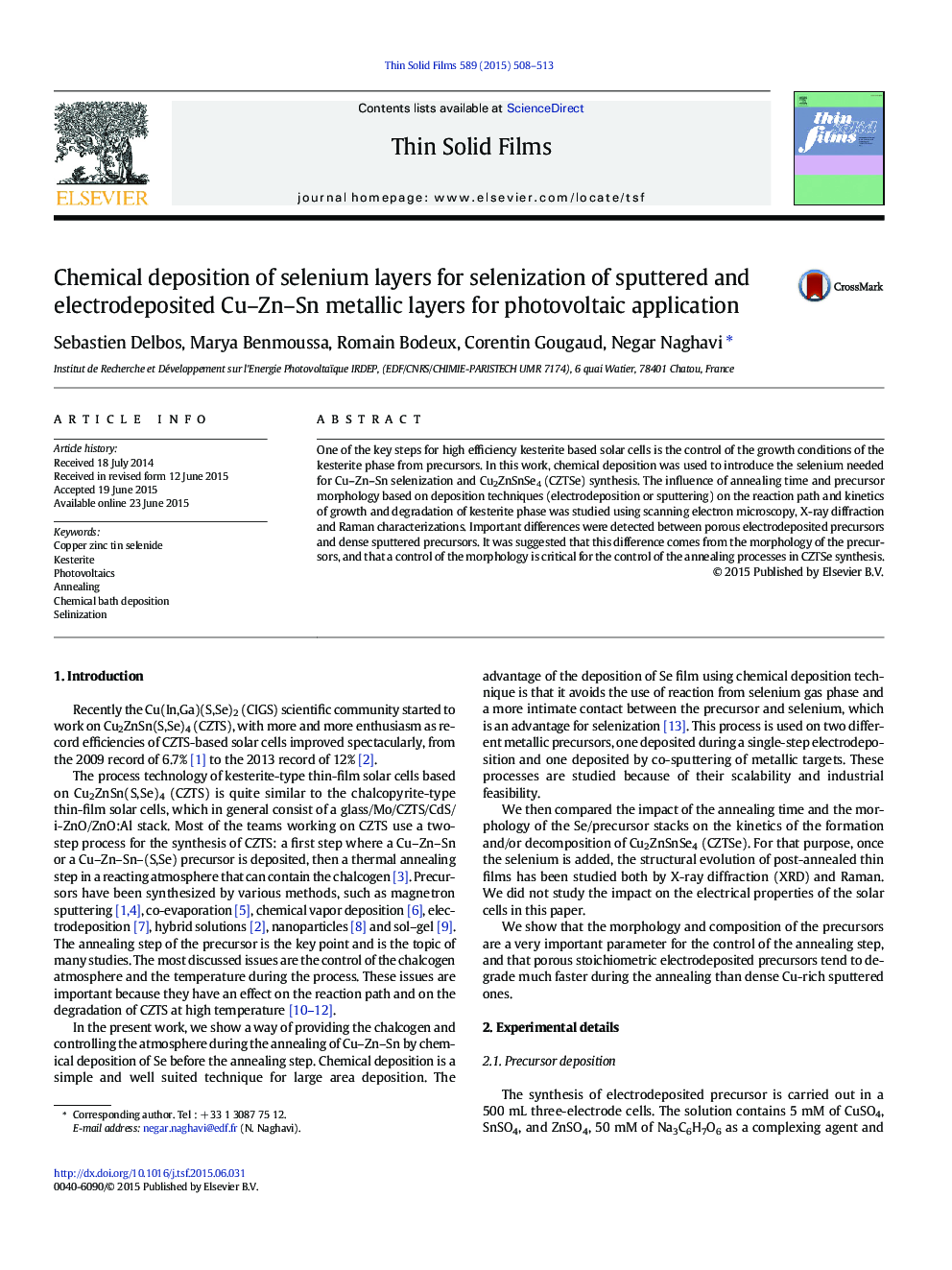| Article ID | Journal | Published Year | Pages | File Type |
|---|---|---|---|---|
| 1664631 | Thin Solid Films | 2015 | 6 Pages |
Abstract
One of the key steps for high efficiency kesterite based solar cells is the control of the growth conditions of the kesterite phase from precursors. In this work, chemical deposition was used to introduce the selenium needed for Cu-Zn-Sn selenization and Cu2ZnSnSe4 (CZTSe) synthesis. The influence of annealing time and precursor morphology based on deposition techniques (electrodeposition or sputtering) on the reaction path and kinetics of growth and degradation of kesterite phase was studied using scanning electron microscopy, X-ray diffraction and Raman characterizations. Important differences were detected between porous electrodeposited precursors and dense sputtered precursors. It was suggested that this difference comes from the morphology of the precursors, and that a control of the morphology is critical for the control of the annealing processes in CZTSe synthesis.
Related Topics
Physical Sciences and Engineering
Materials Science
Nanotechnology
Authors
Sebastien Delbos, Marya Benmoussa, Romain Bodeux, Corentin Gougaud, Negar Naghavi,
